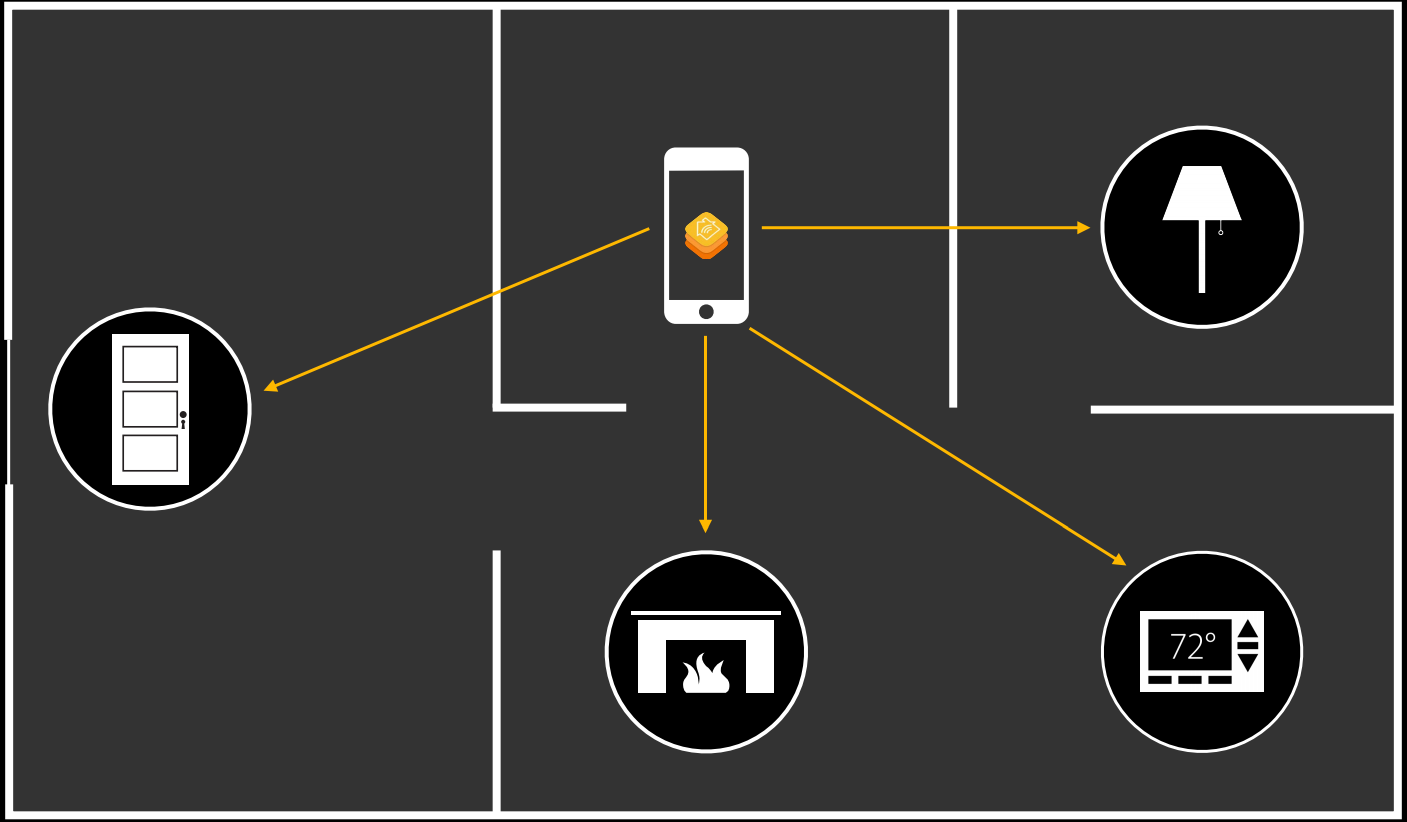Considering Apple’s HomeKit was announced more than a year ago, it’s been moving rather slowly. One reason for the hold up is the stringent security requirements Apple has in place, which presents a rather large barrier to hardware developers.
This HomeKit Icon .sketch file was designed by Luis Abreu – Dribbble – Website – Source page
Nonetheless, there’s been renewed interest in the Internet of Things (IoT) and smart homes are expected to drive significant market growth with a projected market potential of $111.03 billion by 2020. This, along with Apple’s announcements about HomeKit improvements at WWDC 2015, suggests that, although off to a slow start, Apple HomeKit is well positioned to spike in popularity as the connected home market ramps up.
What is HomeKit?
HomeKit is a framework made to facilitate connected homes. It allows for the networking of Apple devices and smart objects (connected lights, smart thermostats, etc.) within the home for the purpose of home automation via a common language and hierarchy to discover, define, and communicate with devices.
At WWDC 2015, Apple announced a number of improvements and additions to HomeKit, including:
- the ability to control new types of smart home products including window shades, motion sensors, carbon dioxide monitors, and security systems
- the ability to control devices remotely via iCloud (iOS9)
- the ability to control HomeKit devices with Apple Watch (Fall 2015)
Via Apple Developer – What’s New in HomeKit
Supported Apple HomeKit Devices
Hardware manufacturers interested in creating products for HomeKit must meet Apple’s MFi Program requirements, and the list of companies onboard isn’t that robust (non-MFi devices can be compatible, but they will connect using a separate bridge device). Consequently, the inventory of devices that work with HomeKit isn’t all that impressive – at least not yet.
That said, Apple has expanded the types of products supported, indicating that they are working on building up the list of compatible Apple HomeKit devices. Below are the devices that are either currently supported or will be in the near future.
- Ecobee3 (Smart Thermostat)
- Honeywell Lyric Thermostat
- Shlage Sense Door Lock
- Hue Automated Lighting System
- MyQ Garage Opener
- Insteon Hub Pro (multiple Insteon products now controllable)
- Incipio Smart Plugs
- Eve Home Monitoring
- Home by Withings
- iHome SmartPlug
- Tempo Environment Monitor
- iDevices Switch
- Connect Sense Smart Outlet
- Velvetwire PowerSlayer Blu
- Caseta Light Dimmers
Via TechRadar
What are The Development Possibilities?
Apple HomeKit has an API for developers to work off of to develop iOS apps that are designed to provide home configuration and/or home automation services. HomeKit apps typically enable users to complete the following tasks:
- Set up their home automation system
- Manage users and permissions (who can access/control devices/accessories)
- Adding and removing accessories that can be controlled
While the basics of HomeKit are covered – turn lights on/off, unlock doors, adjust temperatures, etc. – there is potential to do some exceptional things using the HomeKit framework. Adding custom features, functionalities and services are entirely possible from a development standpoint. For example:
- Using geo-fencing to complete distance-specific actions like turning on and off lights as you walk into a room
- Custom voice commands via Siri
- Using remote control functions to unlock your doors and turn off security alarms for certain individuals (family, friends, cleaners, etc.) and locking and setting the alarm once they leave
- Managing functionality for appliances such as a dishwasher, washer, and dryer
- Controlling vehicle functions from within the home (start engine, set temperature, change radio station, put roof up/down, setting GPS)
- Change the temperature of the home from another location
Despite its fairly uneventful progression thus far, Apple HomeKit opens up a world of possibilities for developers to build exciting and useful home automation services for the IoT. As more HomeKit compatible devices are introduced and the smart home market gains ground, it will be interesting to see all the innovative solutions that follow.





